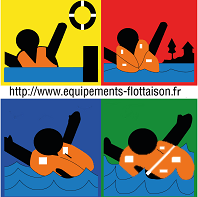The Shark LAP jacket is CAA Spec 5 approved.
It proved its performance in exacting independent test and trials and has been in service since 2002. It has become an industry standard product and is in use worldwide.
Shark 96202 LAP features include:
- Excellent performance on compatibility and self-righting

Lifejacket Air Pocket Plus - Nominal capacity of 275 Newtons
- Manually operated lifejacket meeting CAA Spec. 5
- Fitted with becket, whistle, buddy line and splash guard
- Integral Air Pocket Plus EBS which automatically activates on immersion
- LAP cover on 96202(B) allows for the optional retrofit of a PLB
- aerial – an additional pouch is available for the PLB itself.
The Air Pocket Plus Emergency Breathing System helps support the immersion victim during the underwater escape from a ditched helicopter, by helping to overcome the effects of cold shock, an involuntary physiological response to immersion in water. Cold shock causes gasping and reduces the ability to breath-hold. Air Pocket Plus enables the user to rebreathe their own exhaled air and it also provides a breath of clean air automatically on immersion in case there was no
time to take a breath.
The original Air Pocket Emergency Breathing System was developed after an in depth R&D programme and was independently tested by the Institute of Naval Medicine.
Air Pocket rebreather technology has been in use since 1996 and 4 generations of the Air Pocket have been developed – it is in service globally by the offshore oil and gas industry and the military.
Air Pocket Plus has been designed to minimize the risk of cerebral arterial gas embolism which results from any system which introduces supplementary gas – the breathing bag is generously sized to contain the air charge plus any breath from breath-hold, without producing over-pressure.
The Shark LAP was part of a development carried out for ConocoPhillips and BP aimed at integrating all the items of survival equipment worn by offshore personnel. Independent testing was carried out by Professor Mike Tipton and Dr Susan Coleshaw, at Portsmouth University, RGIT Montrose and NUTEC.
The development involved oil companies, representatives of the offshore workforce, regulatory authorities, logistics providers, helicopter operators and other manufacturers.
This project won the Spirit of Innovation award and the Northern Offshore Federation Innovation award.






